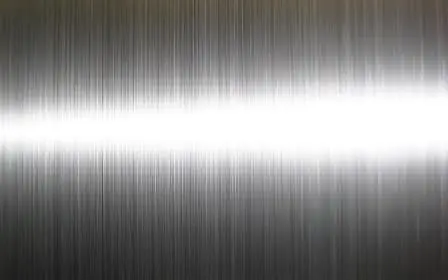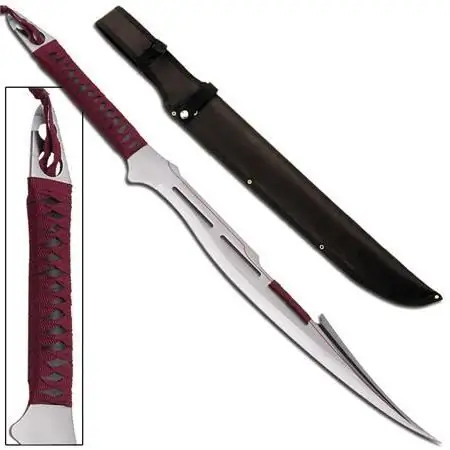2026 Author: Howard Calhoun | [email protected]. Last modified: 2025-06-01 07:12:56
Probably, every person, even the most distant from the industry, at least out of the corner of his ear heard about the outstanding properties of high-speed steel R18. It is rumored to be a super-hard alloy capable of cutting, drilling, or otherwise working any other grade of steel. In addition to strength characteristics, high-speed 18th steel is highly valued by blacksmiths, manufacturers of household knives and edged weapons. Did P18 steel deserve such an attitude, or is everything we know about it just an exaggeration, that is, so to speak, a folk myth? The article will answer this question.
GOST

First, you should refer to the available technical documentation. In this case, it will be GOST under the number 19265-73. In it, we are primarily interested in the list of all alloying elements contained in the alloy, and their mass fraction, of course, in percent.
P18 steelhas the following chemical composition.
- Carbon, which gives it hardness and strength - from 0.7 to 0.8 percent.
- Manganese and silicon, which increase the wear resistance and strength of steel without reducing toughness - from 0.2 to 0.5 percent.
- Chromium, which improves corrosion resistance and overall strength, is present at 3.8-4.4 percent of the total weight.
- Tungsten is the main alloying component for any high speed steel, increasing strength, cutting properties and heat resistance. The alloy contains 17 to 18.5 percent.
- Vanadium, which increases the strength characteristics of steel, contains from 1-1.4 percent.
- The addition of cob alt in the amount of 0.5 percent of the total mass also has a positive effect on the cutting properties and strength of the alloy.
- Among other things, one percent molybdenum is added to the composition of the steel, which helps it become even harder and at the same time increase its heat resistance and cutting properties.
- Nickel in the amount of 0.6 percent in the ligature composition is present in order to balance the steel, giving it ductility and elasticity, as well as increase hardenability.
However, even in steel so saturated with alloying elements, there were “pests” in the form of minor impurities of copper - 0.25 percent, phosphorus and sulfur - 0.3 percent each.
P18 steel: material characteristics

Having studied the full list of alloying elements of steel, it is much easier for us to understand the limits of its capabilities. And, as it turned out, steel grade R18really capable of a lot. Due to the high content of tungsten with the addition of cob alt, molybdenum and vanadium, the alloy is endowed with high density, overall hardness, and heat resistance. However, many people know that hard alloys are more prone to failure under stress than others. In this case, P18 steel is saved by manganese, silicon, nickel and a moderate carbon content. Thus, it becomes more balanced and resistant to destruction and wear. It is these qualities that are paramount for the steel used in the manufacture of cutting tools for metalworking.
Application

We have already agreed that P18 steel is used for the manufacture of cutting tools, but it would be more appropriate to provide you with a list of products made from this steel, albeit not a complete one. The list contains:
- drills (mainly for metal);
- sweep;
- taps for internal threading;
- Dies for external threading;
- cutters for metal lathes;
- sinks;
- broaches;
- cutters.
However, you should be very careful, since P18 is an expensive steel, and it is not always used. So watch the markings once again.
Forging

P18 steel, the characteristics and application of which we have already discussed in detail above, may also be of interest as a material forthe manufacture of various household items, in particular knives, chisels, chisels, chisels, in general, everything that is at least somehow intended for cutting work. And in order to make life easier for blacksmiths and knifemakers, we will consider in detail all the main technological stages in the production of such products.
- Temperature corridor for forging products - 1 280-900 °C. However, due to the initial density of the material, forging steel is very problematic. It will take time and effort to do this.
- Hardening will require the blade to be preheated to 800°C, followed by a main heat to a tempering temperature of 1280°C. P18 is hardened only in oil heated to 200 ° C, after which it cools in air.
- The holiday is made at a temperature of 400 °C for one hour, but three times. The final hardness of the product will be around 62 units on the Rockwell scale.
Analogues brand
I would like to leave the last couple of words in case you suddenly find yourself outside the borders of our vast country, and you urgently need something fast-cutting. In this case, it is better to familiarize yourself with the analogues of P18 in foreign markets.
- United States - T1.
- Europe - 1, 3355 or HS18-0-1.
- Japan - SKH2.
- England - BT1.
- China - W18Cr4V.
This list contains only a small part of the known analogues of P18 steel. But even it will be enough to find what you need if necessary.
Recommended:
Food stainless steel: GOST. How to identify food grade stainless steel? What is the difference between food stainless steel and technical stainless steel?

The article talks about grades of food grade stainless steel. Read how to distinguish food stainless steel from technical
Corrosion resistant steel. Steel grades: GOST. Stainless steel - price

Why metal materials break down. What are corrosion-resistant steels and alloys. Chemical composition and classification according to the type of stainless steel microstructure. Factors affecting pricing. Steel grade designation system (GOST requirements). Application area
Steel 40ХН: characteristics, GOST and analogues

Unfortunately, exploring the vast Internet in search of simple and understandable articles on the topic of metal structures and steels in principle, at best, you will find a couple of completely unstructured articles that do not make so much sense. In other cases, information is provided in the form of simple clippings from regulatory documents, where all information will be given in the form of obscure scientific and technical abbreviations and designations
Steel 20X13: characteristics, application and analogues

This article is a brief description of all the features of steel 20X13: characteristics, application, properties, substitutes and foreign analogues. This article will be useful to those who want to get acquainted with the most important information on this topic in a short time without wasting time
440 steel - stainless steel. Steel 440: characteristics

Many people know 440 steel. It has established itself as a reliable, anti-corrosion, time-tested hard material, which is most often used for the manufacture of knives for various purposes. What is the secret of this alloy? What are its chemical, physical characteristics and applications?

